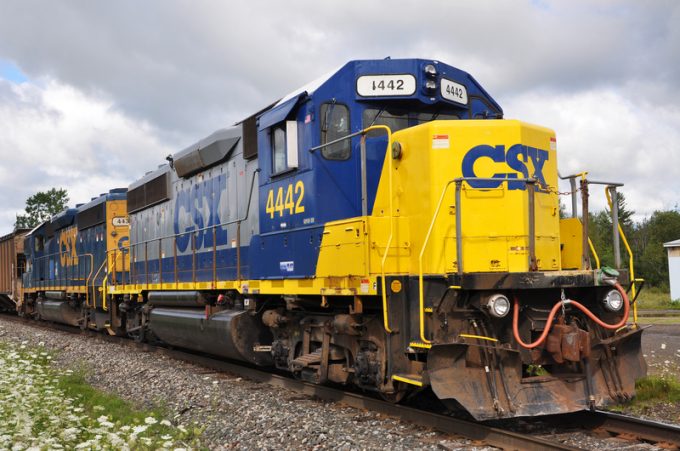EU tariffs on Chinese EV imports not expected to put the brake on sales
The EU imposition of tariffs on Chinese electric vehicles this month is not expected to ...
TFII: SOLID AS USUALMAERSK: WEAKENINGF: FALLING OFF A CLIFFAAPL: 'BOTTLENECK IN MAINLAND CHINA'AAPL: CHINA TRENDSDHL: GROWTH CAPEXR: ANOTHER SOLID DELIVERYMFT: HERE COMES THE FALLDSV: LOOK AT SCHENKER PERFORMANCEUPS: A WAVE OF DOWNGRADES DSV: BARGAIN BINKNX: EARNINGS OUTODFL: RISING AND FALLING AND THEN RISING
TFII: SOLID AS USUALMAERSK: WEAKENINGF: FALLING OFF A CLIFFAAPL: 'BOTTLENECK IN MAINLAND CHINA'AAPL: CHINA TRENDSDHL: GROWTH CAPEXR: ANOTHER SOLID DELIVERYMFT: HERE COMES THE FALLDSV: LOOK AT SCHENKER PERFORMANCEUPS: A WAVE OF DOWNGRADES DSV: BARGAIN BINKNX: EARNINGS OUTODFL: RISING AND FALLING AND THEN RISING

That sinking feeling continues: the Association of American Railroads (AAR) is looking back on a bleak year for intermodal traffic, and for the week that ended October 19, the organisation reported a 9.3% downturn in intermodal volumes.
The previous week produced a 6.6% drop, and AAR members have now rolled through 42 consecutive weeks of continuing decline in their intermodal business. The tally for the year to date shows a drop of 4.3% in volume.
With 1.06 million containers and trailers moved, last month was the lowest September for the AAR since 2016, and July and August were scarcely better. In the third quarter, AAR operators handled 5.1 million units, down 4.6% on a year ago.
But for Union Pacific and CSX, intermodal business fell considerably more, the former reporting a drop of 11%, to 1 million units in Q3, with intermodal revenue falling 9%, while at CSX, volume was down 9%, to 673,000 units, and revenue fell 11%.
Non-US rail carriers did not fare a lot better: Canadian rail companies saw intermodal volumes decline by 4.6%, while Mexican intermodal traffic dropped 2.5%.
And the numbers from the Intermodal Association of North America (IANA) are as equally dismal as those from the AAR. The organisation, which includes other players involved in intermodal business besides rail companies, registered a 3.75 drop in volumes in September, to 1,49 million units. Container traffic slipped by 3.9%, while trailers slumped 19.1%
JB Hunt, the largest intermodal marketing company on the scene, reported flat Q3 volumes compared with last year. But revenue per mile and margins were both down. However, this marked an improvement on the second quarter, when volumes dropped 7.6% and operating income sank 7%.
Operators that focus on international intermodal traffic have laid the blame squarely on the impact of tariffs on imports, particularly from China.
Gene Seroka, executive director of the port of Los Angeles, said “the ill-advised US-China trade war continues to wreak havoc on American exporters and manufacturers”.
IANA attributed the weakness in the international segment to slowing global trade, and agreed tariffs had been an issue. For the domestic decline, it pointed to increased available truck capacity, leading to softer prices and more aggressive competition from that side.
CSX and Union Pacific top brass have blamed the US economy and a sluggish trucking market for the decline in their intermodal business.
However, pundits have commented that neither of these two carriers appeared particularly concerned about their intermodal setbacks. If trucking firms managed to capture some intermodal business, it was arguably as much a result of their pricing approach as of a lack of response from the rail side. Both CSX and Union Pacific seem to be more focused on their transition to ‘precision railroading’ and have, reportedly, largely held the line on their intermodal pricing.
According to JB Hunt, CSX’s transition to precision railroading led to the elimination of hundreds of traffic lanes, resulting in the loss of between 50,000 and 70,000 intermodal loads.
Another factor for the rail companies’ muted response to the loss of intermodal business was likely an underlying confidence that there are better times ahead. A number of intermodal operators have signalled hopes that business will rebound before long.
JB Hunt management expects the fourth quarter to produce higher volumes than in the same period last year. It looks to leverage its JB Hunt 360 portal for quotes and booking of truckload, LTL and intermodal shipments to boost traffic. In addition, it is planning to boost its reefer fleet in order to sustain double-digit growth in intermodal reefer business.
Overall, the outlook for the coming decade looks modestly positive, according to the view from the rival perspective. The American Trucking Association’s recently published Freight Transportation Forecast: 2019 to 2030, predicts that trucking and total rail transport will lose market share (despite increases in tonnage and revenues), while intermodal business will show modest growth.
Comment on this article